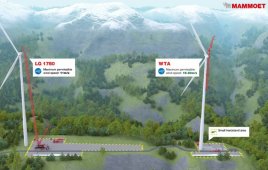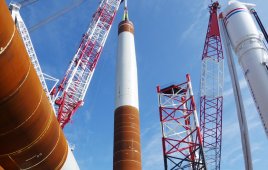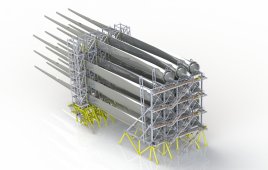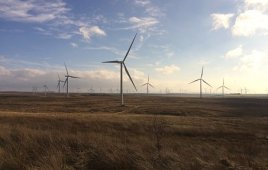A new, scanning-spot laser sensor designed to automate and speed the manufacture of wind towers and other structures containing metal of different thickness has been launched by Meta Vision Systems. Designated DLS200, the sensor is produced at the company’s factory in Eynsham, Oxfordshire.
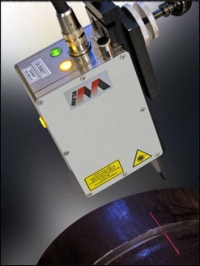 The thickness of the steel plates that form the base of a wind tower can be 50 mm or more, while the middle section is fabricated from lighter gauge metal and near the top, the steel is thinner still. Welding of these various gauges requires different procedures.
The thickness of the steel plates that form the base of a wind tower can be 50 mm or more, while the middle section is fabricated from lighter gauge metal and near the top, the steel is thinner still. Welding of these various gauges requires different procedures.
The base is typically prepared with a U joint profile and welding takes place in several passes. The middle section requires a V type joint and is welded in one or two passes. Steel at the top is welded with a simple butt joint preparation. The DLS200 sensor has a fully programmable scan configuration, which means that a wide scan can be used for the U and V joints, but a narrow scan with high resolution can be used for the smaller butt joints.
Another exclusive feature of the DLS sensor is that the stripe produced by the normal laser scan can be shrunk to a spot. This is useful for welding cap passes where the edges of the weld preparation may have melted away.
At the touch of a button, the sensor can project the spot to measure and control the height of the welding head. At the same time, the machine operator can use the laser spot as a guide for controlling manually the horizontal position of the welding head.
DLS200 sensors are already assisting automated welding of wind towers at test sites and have been well received. Wind tower manufacturers say that the main benefit of using the sensor to provide automatic control of the welding process is improved quality. Defects are reduced, which translates into large savings, especially considering the time and cost of repairing root weld defects in thicker material.
Filed Under: Construction

